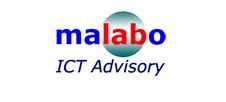Digital architectures, also called IT or ICT Enterprise Architectures and indicated by the acronym ICT EA later in this website and in many of the referenced articles, constitute the reference framework and the technical "regulatory plan" for the evolution of the Informatics System of a specific company / entity of any size, in line with its strategic business plan.
The Informatics Systems are more and more etherogeneous , with a large use of "mobile" systems, of outsourcing and cloud solutions, of new virtualization techniques, of the possible integration with OT, Operational Technology, and in particular with IoT,/IIoT. The Informatics System is therefore more and more complex to govern and to manage, in line with the changing needs of the business and of the company organizations, and in parallel with the evolving technologies and markets. There is also the need to safe the investments / expenses in ICT already made. All is changing, and a modern Informatics System has to be agile, flexible, easy to manage and secure, able to provide economical, freemdly, measurable and manageable ICT services.
In a such dynamic context, and in order to satisfy all above needs, an ICT EA plays a key role not only for large company, but also for SME.
When and how is it appropriate to move to cloud solutions or more generally to outsourcing? Which parts of your computer system? And with what actual levels of digital security? Which of the modern virtualization techniques to use and / or request? The first answer to this type of question must be at an architectural level, photographing the current situation (as is) and planning its evolution in the near future (to be).
For any ICT EA, the well-consolidated and universally accepted "standard" reference framework is today constituted by Togaf, and by SOA, Service Oriented Architecture (and its present evolution in micro servivices architectures). The "old" albeit conceptually always valid ISO's OSI (Open System Interconnection) model, constitutes the conceptual basis of the hierarchical structure of every architecture, first of all of the TCP / IP Internet architecture.
Other terms for modern ICT architectures include EDA, Event Driven Architecture, MDA, Model Driven Architecture, Microservices, etc. For certain functional groups / sectors, and in particular for the open source world, specific "sector" architectures have been introduced, called stacks, which group groups of solutions. Among the most well-known and widespread stack the LAMP (Linux, Apache, MySQL, PHP / Perl / Python) which constitutes an archetype of the web environment, the stack for Onion digital security, and so on. With the growth of the cloud virtualization techniques are significantly evolving: from clusters to dockers and kubernetes. These evolutions will be the basis of the next ICT infrastructures, especially in cloud areas: on the market there are solutions linked to the types of hypervisor and independent, proprietary and opens source operating systems. It is an important trend even if it is technical and complex: it must be carefully considered in order to plan the evolution of one's ICT architecture.
Each major ICT Supplier has created its own specific proprietary architecture, at least for the type of products / solutions / services it offers on the market, which guides and sometimes binds in the interaction with solutions from other suppliers. This is another crucial element of the need for an ICT EA for your organization, in order to choose new products / solutions / services that are truly compatible and that can effectively interoperate with those already in use in production.

